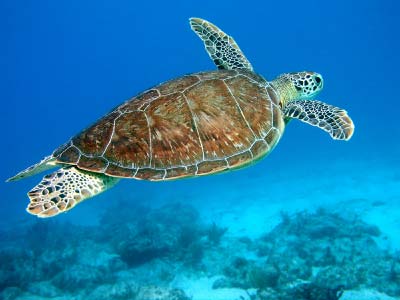Types
- Green Sea Turtle
The range of the sea turtle extends throughout tropical and subtropical seas around the world, with two distinct populations in the Atlantic and Pacific Oceans. Their common name derives from the often green fat found beneath their carapace . The Green Sea Turtle possess a dorsoventrally flattened body covered by a large, teardrop-shaped carapace and a pair of large, paddle-like flippers.
- Loggerhead
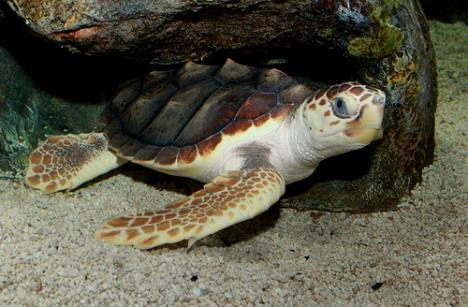
The Loggerhead is an oceanic turtle distributed throughout the world. The loggerhead is the world's largest hard-shelled turtle, measuring up to 84 in long when fully grown. The skin ranges from yellow to brown in color, and the shell is typically reddish-brown. It spends most of its life in saltwater with females briefly coming ashore to lay eggs. The loggerhead sea turtle is omnivorous, feeding mainly on bottom dwelling invertebrates.
- Leatherback
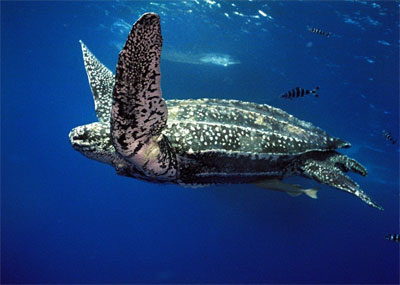
The leatherback turtle is the largest of all living sea turtles and the fourth largest modern reptile. It can easily be differentiated from other modern sea turtles beacuse of its carapace which is covered by skin and oily flesh. Instead of scutes, thick, leathery skin with embedded minuscule osteoderms. The entire turtle's dorsal surface is colored dark grey to black with a scattering of white blotches and spots.
- Hawksbill
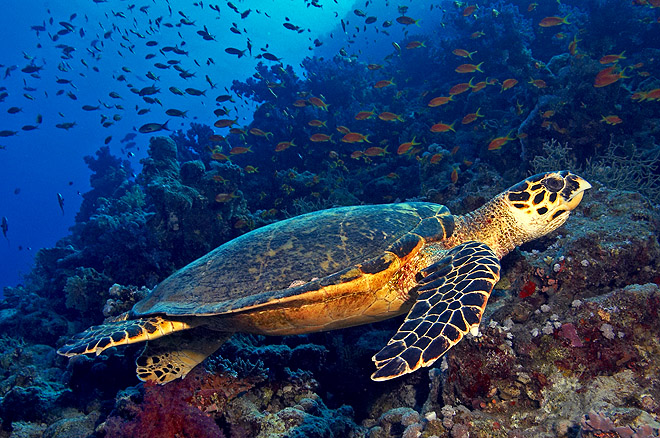
The hawksbill turtle is a critically endangered sea turtle. The species has a worldwide distribution, with Atlantic and Pacific subspecies. It has a generally flattened body shape, a protective carapace , and flipper-like arms, adapted for swimming in the open ocean. Hawksbill shells slightly change colors, depending on water temperature. Its primary prey are sea sponges. Some of the sponges they eat are lethally toxic to other organisms. They also feed on other invertebrates , such as comb jellies and jellyfish.
- Kemp's Ridley
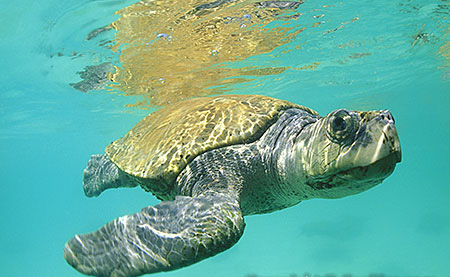
Kemp's Ridley is a critically endangered species of sea turtle. Kemp's Ridley is the smallest living sea turtle species, reaching maturity at 2–3 feet long and averaging only 99 lb. It is typical of a sea turtle, having a dorsoventrally depressed body with specially adapted flipper-like front limbs and a horny beak . Kemp's Ridley sea turtles generally prefer warm waters but can inhabit north waters. The Kemp's Ridley turtle feeds on molluscs , crustaceans , jellyfish , algae or seaweed , and sea urchins.
- Olive Ridley
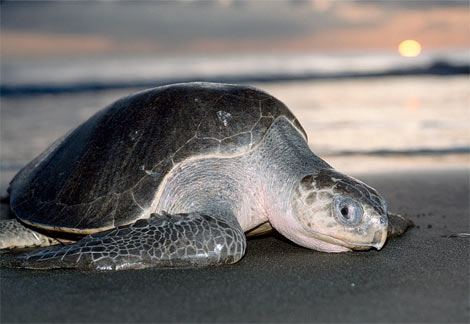
The Olive Ridley also known as the Pacific Ridley, is a species of sea turtle. The Olive Ridley is the smallest extant sea turtle, with an adult carapace length averaging 60 to 70 cm 1 .The heart-shaped carapace is characterized by four pairs of pore-bearing inframarginal scutes on the bridge, two pairs of prefrontals, and up to nine lateral scutes per side 1,2 . Olive Ridleys are unique in that they can have a variable and asymmetrical lateral scute count ranging from five to nine plates on each side, with six to eight being most commonly observed
- Flatback Sea Turtle
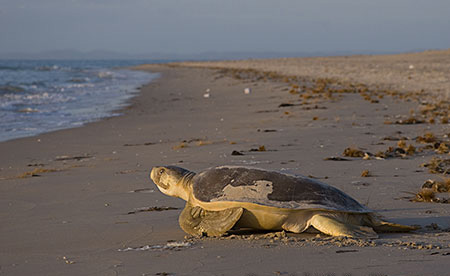
Flatback turtles are usually found in bays, shallow, grassy waters, coral reefs , estuaries and lagoons on the northern coast of Australia and off the coast of Papua New Guinea . The species may feed off Indonesia and Papua New Guinea, but it nests only in Australia . Nesting occurs across the top half of Australia, from Exmouth in Western Australia toMon Repos in Queensland . The most significant breeding site is Crab Island in the western Torres Strait . Breeding may also occur on the islands of the southern Great Barrier Reef , and on mainland beaches and offshore islands north of Gladstone .


